As a child grows, their needs and abilities evolve rapidly. One significant milestone in this journey is transitioning from booties to their first pair of shoes. This change isn’t just about footwear; it’s a step towards new adventures and experiences. It’s crucial for parents to recognize when their child is ready for this transition and to understand how to choose the right shoes that support healthy foot development.
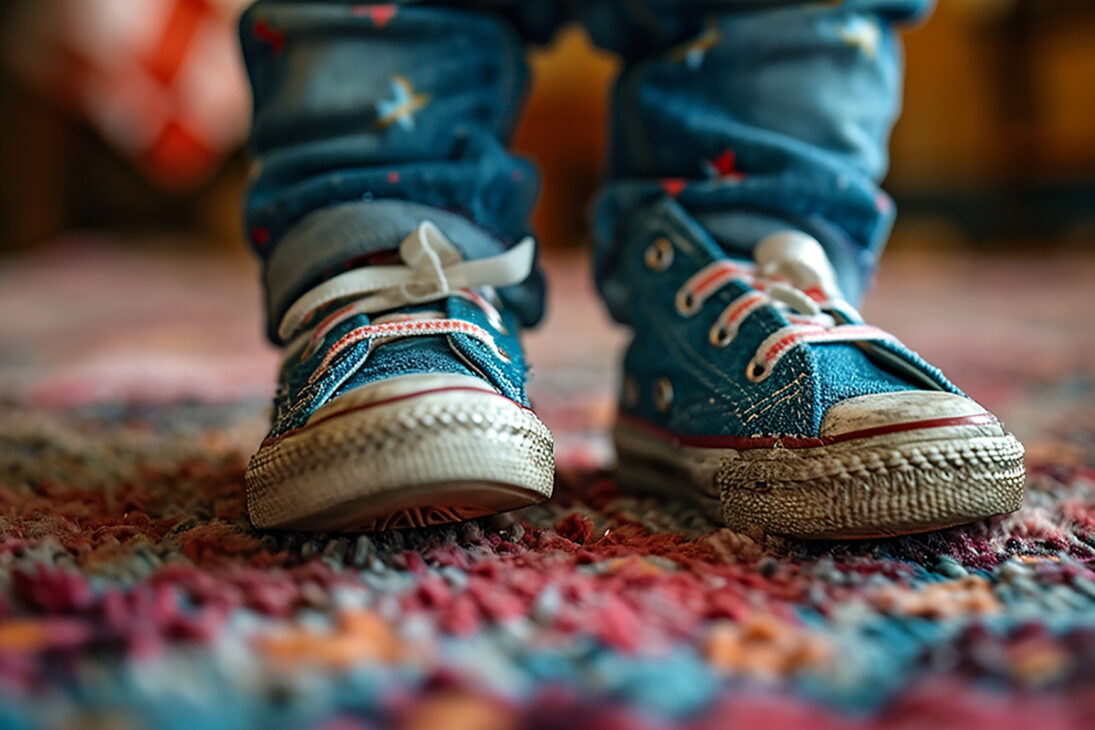
5 Signs It’s Time to Switch to Shoes
- Stepping into a New Phase – As your baby grows and begins to explore the world, their tiny feet require different support than what booties offer. The transition to shoes is an exciting milestone that indicates your child is ready for more substantial adventures. Here’s how to tell when it’s time to make the switch:
- Developmental Milestones – The journey from crawling to standing marks the initial sign. If your baby is pulling themselves up and attempting to stand, it’s time to start considering shoes. This transition often happens around the age of 9 to 12 months but can vary for each child.
- First Steps – When your little one starts taking those tentative first steps, it’s a clear indicator that shoes are needed. Shoes provide stability and protect their feet from hazards as they learn to walk.
- Foot Strength and Movement – Pay attention to the strength and movement of your baby’s feet. If their feet seem more robust and they’re moving them with more purpose, it’s a sign they may be ready for shoes.
- Increased Outdoor Activity – If you find yourself taking your baby outdoors more frequently, especially on varied surfaces, shoes will protect their feet from rough or hot ground.
Remember, every child’s pace of development is unique. Some may need shoes earlier, while others might be comfortable in booties a bit longer. Trust your parental instincts and your child’s cues to guide you through this transition.
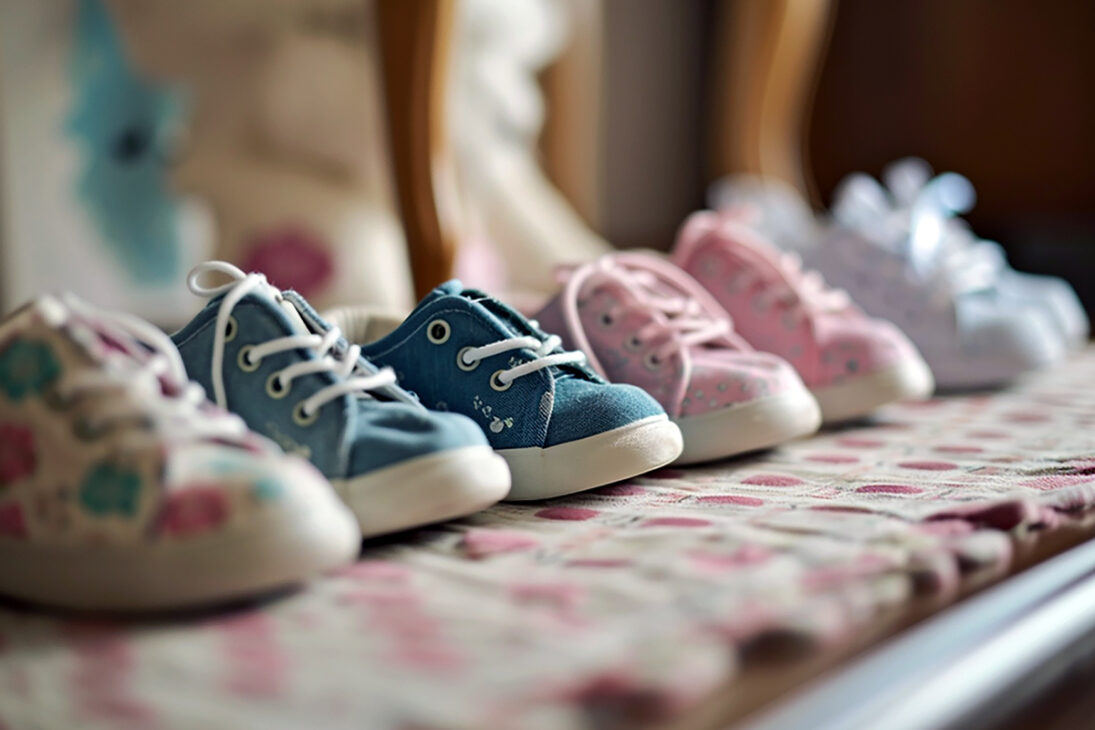
Choosing the Right First Shoes
Selecting your baby’s first shoes is a crucial step in their developmental journey. The right pair can support their growing feet and encourage healthy foot development. Here are some key considerations to help you make the best choice:
- Material Matters – Look for natural, breathable materials like soft leather or canvas. These allow for air circulation, keeping your baby’s feet comfortable and reducing the risk of irritation.
- Flexibility is Key – A flexible sole is essential for babies’ shoes. It should be soft enough to bend with your baby’s foot, promoting natural foot movement and muscle development.
- Perfect Fit – Ensuring a snug but comfortable fit is crucial. There should be enough room for the toes to wiggle without being too loose. A thumb’s width between the toe and the front of the shoe is a good rule of thumb.
- Supportive Design – Shoes should have a solid heel counter (the back part of the shoe) for stability, but the rest of the shoe should be soft and pliable. Look for shoes with adjustable fastenings, like Velcro or laces, to ensure a secure fit.
- Non-Skid Soles – For those first wobbly steps, non-skid soles can prevent slipping, making the learning process safer and more enjoyable.
- Growth Considerations – Babies’ feet grow quickly, so regular size checks are vital. Avoid the temptation to buy a much larger size for them to ‘grow into.
Choosing the right shoes can set the foundation for healthy foot development and an exciting walking adventure. Remember, comfort and support are the keys to happy, healthy little feet!

Fitting and Comfort – Ensuring a Perfect Match
- The Perfect Fit – A Step-by-Step Guide: Getting the right fit in your child’s first shoes is not just about comfort; it’s about supporting their developing feet and encouraging confident steps. Here’s a straightforward approach to ensure a perfect match:
- Measure Regularly – Children’s feet grow fast! Measure both feet every two to three months. Remember, one foot may be slightly larger than the other, so always go by the larger size.
- Measuring Technique – Use a child-specific shoe size chart and measuring tool. Place your child’s foot flat on the chart with their heel against the marked line. Measure to the longest toe – this is your child’s shoe size.
- Check Width – Not all feet are the same width. Some brands offer different width options. A good fit should be snug but not tight, allowing the foot to move without slipping.
- Test Walk – Once the shoes are on, let your child walk around. Watch for signs of discomfort or slipping. The shoes shouldn’t leave marks on the feet after removal.
- In-Store Assistance – If possible, visit a children’s shoe store where professionals can assist with fitting. They’ll ensure the shoes are a perfect fit in both length and width.
- At-Home Tricks – If buying online, use printable fitting guides. Place your child’s foot on the guide to find the correct size. Also, trace your child’s foot on paper and compare it with size charts.
Remember, the right fit is about more than size; it’s about providing a comfortable, secure base for those precious little feet to explore the world. So, take your time and make sure each pair of shoes is a perfect match for your child’s unique feet.
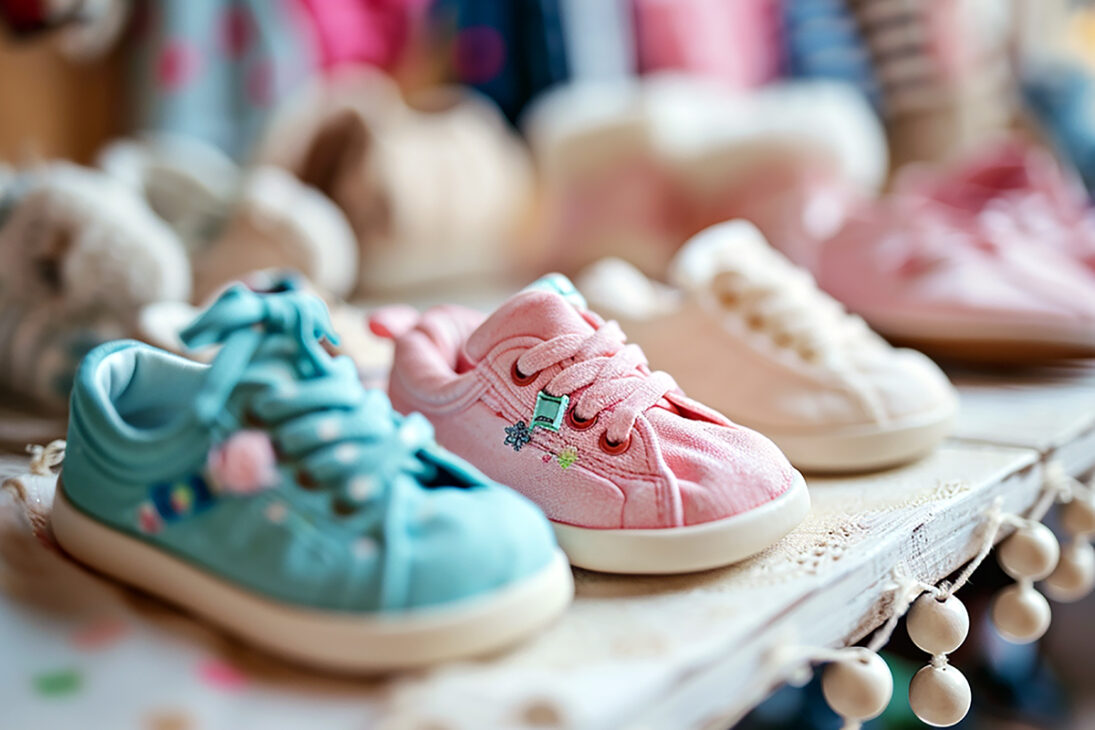
Adjusting to New Shoes Tips for Parents
When your little one transitions from booties to shoes, it’s a significant milestone. Here are strategies to help them adjust smoothly:
- Gradual Introduction – Start by letting your child wear their new shoes for short periods at home. This gradual approach helps them get used to the feel and fit of shoes.
- Encourage Practice – Motivate your child to walk around in their new shoes. Create fun games or walking activities to make this practice enjoyable and engaging.
- Comfort is Key – Ensure the shoes are comfortable from the start. Check for any signs of irritation or rubbing, and adjust laces or straps as needed.
- Positive Reinforcement – Celebrate their progress! Praise your child for wearing their shoes and encourage them by acknowledging their big step into walking shoes.
- Addressing Reluctance – If your child is hesitant to wear shoes, be patient. Offer choices between two pairs, making them feel in control. Sometimes, shoes with their favorite colors or characters can make a difference.
- Dealing with Discomfort – If your child shows discomfort, reassess the fit. Sometimes, a slight size adjustment can solve the problem. If discomfort continues, consult with a pediatric podiatrist.
- Routine Building – Incorporate wearing shoes into their daily routine. Consistency will help them understand that shoes are a part of their regular attire.
- Be Observant – Watch how your child walks in their shoes. If you notice any unusual walking patterns, like limping or tiptoeing, it might indicate an issue with the fit or style of the shoe.
- Check for Wear – Regularly inspect the shoes for signs of wear and tear. Uneven wear might indicate an issue with fit or walking pattern.
Remember, every child is unique in how they adapt to new shoes. Patience, encouragement, and attention to their comfort can make this transition a positive and successful experience. With the right approach, your child will be strutting in their new shoes in no time!
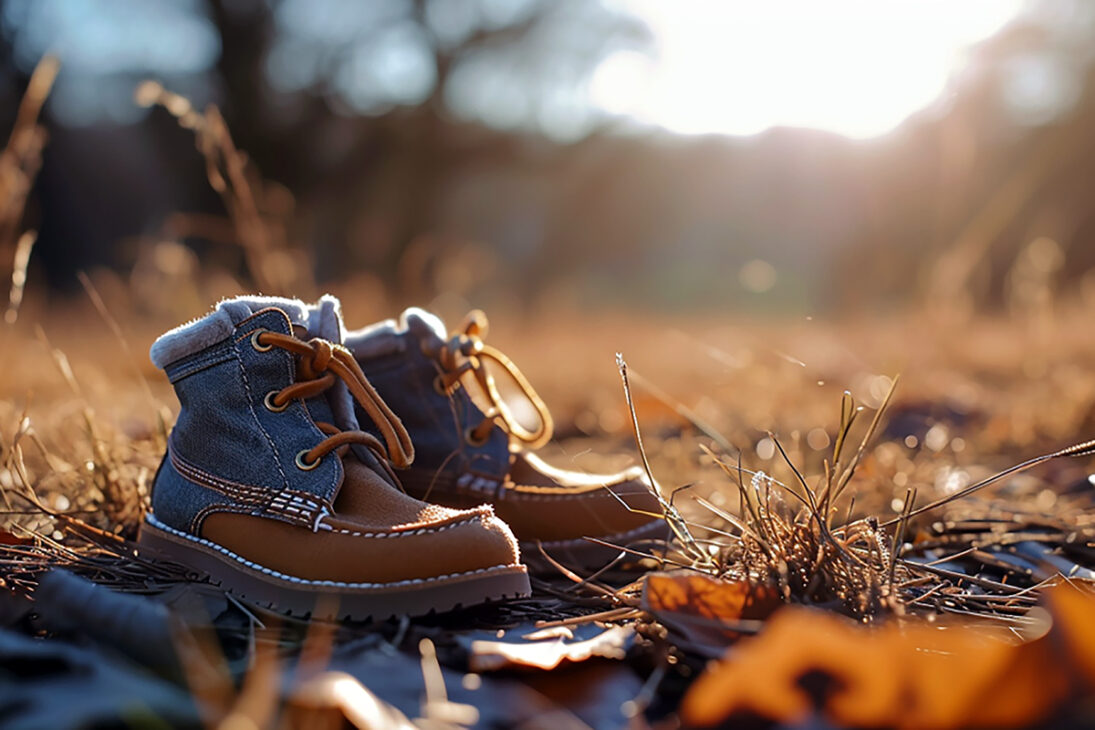
Monitoring and Updating Footwear as They Grow
Children’s feet grow rapidly, and keeping up with their changing needs is crucial. Here’s how to ensure their footwear remains suitable:
- Regular Checks – Every few months, check your child’s shoe size. Children’s feet can grow quickly, and shoes that were perfect a few months ago might now be too small.
- Signs of Wear – Look for signs of wear and tear, such as stretched out straps, worn soles, or holes. These signs indicate it’s time for a new pair.
- Comfort is Crucial – Pay attention to your child’s feedback. Complaints about discomfort or refusing to wear certain shoes can signal that they no longer fit properly.
- Room to Grow – While you don’t want shoes that are too large, a little room for growth is beneficial. There should be about a thumb’s width of space between the toe and the end of the shoe.
- Seasonal Considerations – Change in seasons often calls for different types of shoes. Ensure that summer and winter footwear is appropriately sized before the season starts.
- Watch Walking Patterns – Changes in your child’s walking pattern might indicate discomfort or improper fit. It’s essential to observe and address these changes promptly.
- Replacing Shoes – On average, children might need new shoes every 3-6 months, depending on their growth rate. Be prepared to shop for shoes more frequently during growth spurts.
- Quality Matters – Invest in good-quality shoes that support healthy foot development. Poor-quality shoes can wear out faster and might not provide adequate support.
- Second-Hand Shoes Caution – While hand-me-downs are budget-friendly, used shoes can have molded footbeds from the previous wearer, which might not be ideal for your child’s feet.
By monitoring your child’s footwear regularly and being attentive to their growth and comfort, you can ensure that their shoes support their development and activities. Remember, well-fitting shoes are essential for their overall foot health and comfort as they grow and explore the world.
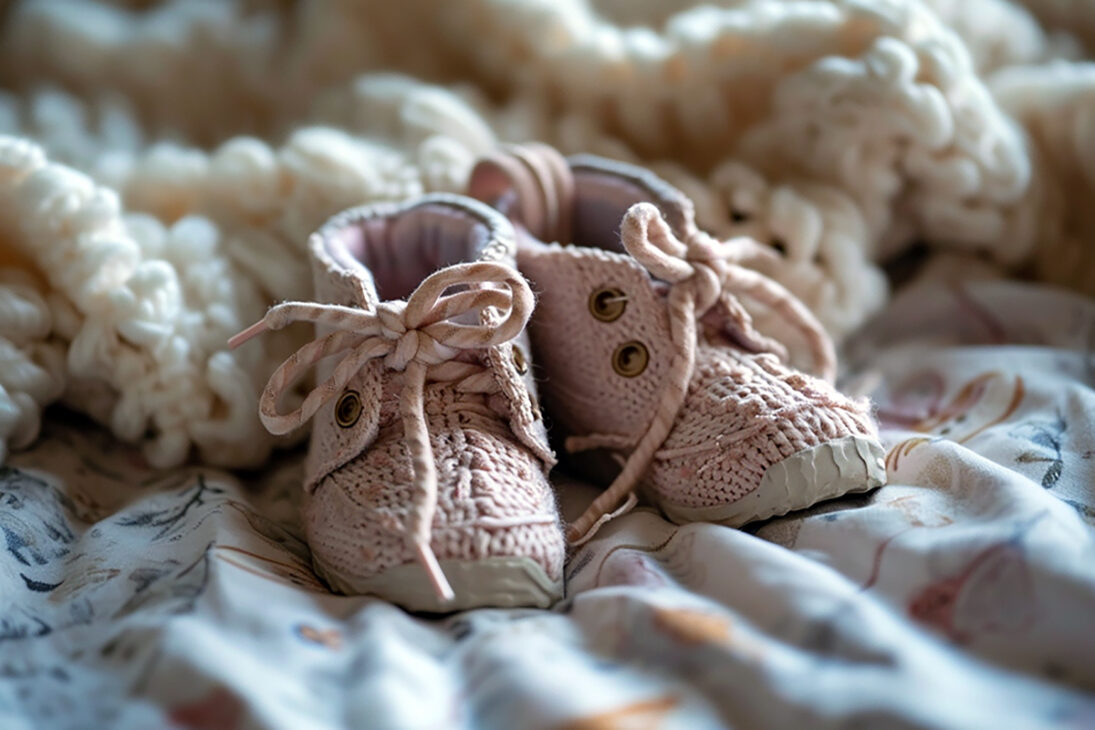
Embracing Each Step with Confidence and Care
The transition from booties to shoes marks a significant milestone in your child’s journey, a symbol of growing independence and curiosity. As they venture from crawling to taking their first confident steps, the right footwear plays a pivotal role in supporting their development. This process isn’t just about footwear; it’s about nurturing your child’s growing desire to explore and engage with the world around them.
Here’s how parents can make this transition smooth and supportive:
- Patience and Observation – Every child progresses at their own pace. Watch for signs of readiness and encourage their natural progression without rushing.
- Supportive Choices – Selecting the right shoes ensures comfort and safety, fostering a positive experience as they learn to walk and run.
- Celebrating Milestones – Cherish these moments of growth. Each step is a leap towards independence, deserving of recognition and encouragement.
- Understanding and Adaptability – Be ready to adapt to your child’s changing needs, whether it’s a different shoe size or style to match their increasing activities.
- Fostering Confidence – With each well-fitted shoe, you’re not just protecting their feet. You’re giving them the confidence to step forward, explore, and embrace new challenges.
- Shared Experiences – This journey is also an opportunity for bonding. Enjoy the moments of choosing their first pair of shoes together, making it a memorable experience.
The shift from booties to shoes is more than just a wardrobe change. It’s an exciting phase that opens up a world of possibilities for your little explorer. By being mindful and supportive, parents can ensure that their children step into this new chapter with confidence, comfort, and a sense of adventure. Here’s to celebrating every step of your child’s incredible journey!










